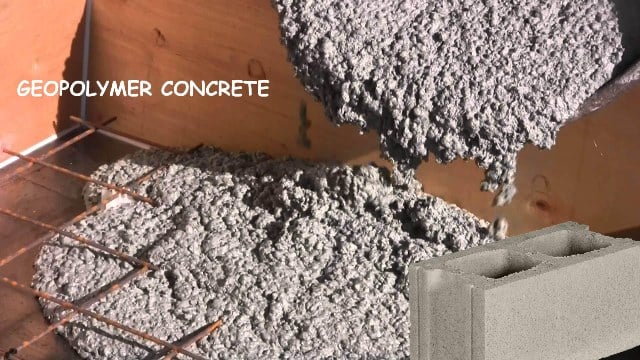Concrete: is a collective term for engineering composites made of cementitious materials that glue aggregates into a whole. The term concrete is usually used to refer to cement as the cementitious material, sand and stone as the aggregate; and water (may contain additives and admixtures) in a certain proportion, mixed to obtain cement concrete, also known as ordinary concrete, which is widely used in civil engineering.
As of April 2023, the annual global production of concrete more than 4 billion tons.
Features
Concrete has the characteristics of abundant raw materials, low price and simple production process, thus making its usage increasing. Concrete is also characterized by high compressive strength, good durability, and a wide range of strength classes. These features make its use very wide, not only in a variety of civil engineering, is the shipbuilding industry, machinery industry, the development of the sea, geothermal engineering, etc., concrete is also an important material.
Function
Heterogeneity
The most important performance of the concrete mix. It is a comprehensive representation of the consistency of the mix, fluidity, plasticity, resistance to delamination and secretion of water and easy to smear the performance of the surface. There are many methods and indicators to determine and express the mix compatibility, China mainly adopts the slump (mm) measured by the truncated cone slump cylinder and the Vibe time (sec) measured by the Vibe meter as the main index of consistency.
Strength
The most important mechanical properties of concrete after hardening, refers to the ability of concrete to resist stresses such as compression, tension, bending and shear. Water-cement ratio, cement species and dosage, the variety and amount of aggregates, as well as mixing, molding, maintenance, all directly affect the strength of concrete. Concrete according to the standard compressive strength (side length of 150mm cube as a standard specimen, curing under standard curing conditions for 28 days, measured in accordance with the standard test method with 95% guarantee of the cubic compressive strength) divided into strength levels, known as the standard, divided into C10, C15, C20, C25, C30, C35, C40, C45, C50, C55, C60 C65, C70, C75, C80, C85, C90, C95, C100, a total of 19 grades. The tensile strength of concrete is only 1/10 to 1/20 of its compressive strength. improving the ratio of tensile and compressive strength of concrete is an important aspect of concrete modification.
Deformation
Concrete will deform under load or temperature and humidity, mainly including elastic deformation, plastic deformation, shrinkage and temperature deformation. The elastic deformation of concrete under short-term loading is mainly expressed by the modulus of elasticity. Under long-term loading, the phenomenon of constant stress and continuous increase in strain is creek deformation, and the phenomenon of constant strain and continuous decrease in stress is relaxation. The volume deformation due to hydration of cement, carbonation of cement stone and water loss is called shrinkage.
The deformation of hardened concrete comes from two aspects: environmental factors (temperature and humidity changes) and applied load factors, so there are:
(1) Deformation under load
- Elastic deformation
- Inelastic deformation
(2) Deformation under non-load action
- Shrinkage deformation (dry shrinkage, self-shrinkage)
- Expansion deformation (wet expansion)
(3) Deformation under compound action
- Roughness
Durability
Under general conditions, concrete has good durability. However, in cold areas, especially in the water level changes in the project site and in the state of full water by the frequent freeze-thaw alternating action, concrete is easy to damage. For this reason, the concrete should have certain requirements for frost resistance. For impermeable projects, concrete is required to have good impermeability and corrosion resistance. Seepage resistance, frost resistance, and erosion resistance for concrete durability.
Component materials and structure
Ordinary concrete is a man-made stone made of cement, coarse aggregate (gravel or pebbles), fine aggregate (sand), admixtures and water mix, hardened. Sand and stone play a skeletal role in concrete and inhibit the shrinkage of cement; cement and water form a cement paste that wraps around the surface of coarse and fine aggregates and fills the voids between the aggregates. The cement paste plays a lubricating role before hardening, so that the concrete mix has good working properties, and after hardening the aggregates are cemented together to form a strong whole.
Main technical properties
The properties of concrete include the compatibility of the concrete mix, concrete strength, deformation and durability.
- The compatibility, also known as workability, refers to the properties of concrete mixes that facilitate the operation of various construction processes under certain construction conditions to ensure that a uniform and dense concrete is obtained. The compatibility is a comprehensive technical index, including three main aspects of fluidity (consistency), cohesiveness and water retention.
- Strength is the main mechanical properties of concrete after hardening, reflecting the quantitative ability of concrete to resist loads. Concrete strength includes compressive, tensile, shear, flexural, flexural and grip strength. The compressive strength is the largest and the tensile strength is the smallest.
- The deformation of concrete includes deformation under non-load and deformation under load. The deformation under non-load action are chemical shrinkage, wet and dry deformation and temperature deformation, etc. Excessive amount of cement is prone to chemical shrinkage in the interior of the concrete and causes microfine cracks.
- Concrete durability refers to the ability of concrete to resist the action of various destructive factors under actual use conditions and maintain the strength and appearance integrity for a long time. It includes the frost resistance, seepage resistance, corrosion resistance and carbonation resistance of concrete.





